

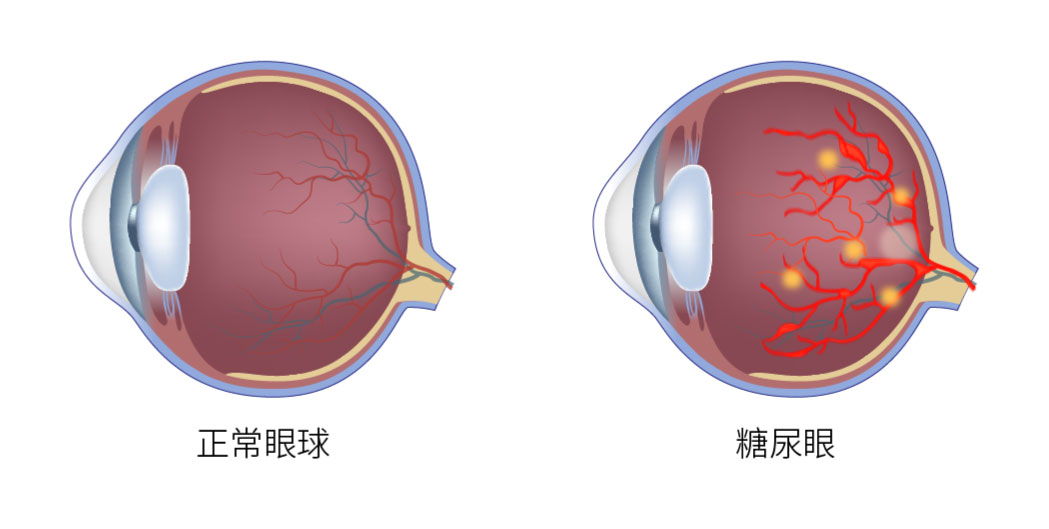
Diabetic retinopathy (diabetic eye)
Diabetic retinopathy(commonly known as diabetic eye) is one of the complications of diabetes. Improper blood sugar management damages the endothelium of retinal blood vessels, causing microfilament vasculopathy. The retina is covered with tiny blood vessels, and lesions can cause vascular obstruction and reduce the blood supply to the retina, resulting in hypoxia and triggering the growth of new blood vessels. Abnormally fragile new blood vessels can easily rupture, bleed, and leak into the vitreous body. Hypoxia in the retina can lead to edema and death of optic nerve cells, resulting in vision loss. Diabetic eye can cause a series of pathologies such asglaucoma symptoms, retinal detachment, which may cause severe vision loss.
Causes of Diabetic Eye
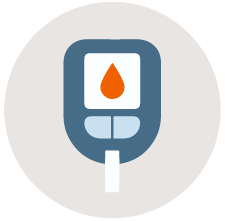
Complications of diabetes mellitus
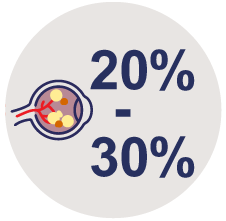
Diabetes for 5 years or more: 20-30% chance of developing diabetic eye
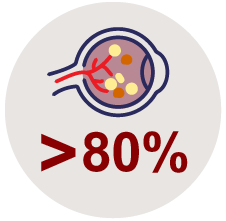
Diabetes for 15 years or more: 80% chance of developing diabetic eye
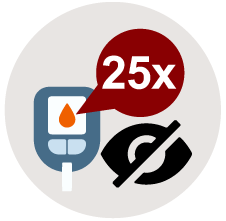
The risk of blindness is 25 times higher in people with diabetes than those without if the retinopathy is not treated properly.
Symptoms of Diabetic Eye

Mild cases
No obvious symptoms, vision not significantly affected: control of blood glucose levels and regular eye examinations are required

Moderate cases
部分患者仍沒有病徵,持續觀察,但有需要會進行防護性的療程

Severe/Very severe cases
If the vision has been impaired and having blurry eyes, Eye Floaters、眼痛、中央視力模糊等情況,應接受藥物或激光療程以控制病情,若嚴重需要進行手術調理

Mild cases
No obvious symptoms, vision not significantly affected: control of blood glucose levels and regular eye examinations are required

Moderate cases
部分患者仍沒有病徵,持續觀察,但有需要會進行防護性的療程

Severe/Very severe cases
視力已受影響,出現眼矇、飛蚊、眼痛、中央視力模糊等情況,應接受藥物或激光療程以控制病情,若嚴重需要進行手術調理
調理方法

糖尿病患人士患有糖尿眼風險比普通人高,建議每年進行一次糖尿眼檢查以及控制血糖、血壓、血脂水平。若不幸患上糖尿眼,以下調理方法有助改善情況:
激光調理法
Apply laser to destroy oxygen-deficient retina to prevent the growth of diseased blood vessels and to reduce leakage. The treatment also stimulates the peripheral retinal cells to absorb water, reducing the condition of macular oedema.
眼內注射
Intravitreal Anti-VEGF Injection
Inject anti-VEGF drugs into the vitreous to help inhibit vascular proliferation and vascular endothelial growth in the eye. It is expected to improve vision by reducing vascular leakage and bleeding.
Vitrectomy
In severe cases such as retinal detachment, intraocular haemorrhage or persistent macular oedema, vitrectomy can help restore vision. However, this is a complex procedure with a success rate ranging from 50% to 80%, depending on the individual case.
Eye Examination Schedule

Diabetics under 30 years old
It is recommended that eye exams be performed within 5 years of the discovery of diabetes and annually thereafter

Diabetics over 30 years old
It is recommended to have an eye exam as soon as you find out you have diabetes, and annually thereafter.

The pregnant
Pregnancy can cause a rapid worsening of diabetic eye disease. When you are pregnant with diabetes, you should have an eye exam as soon as possible.

